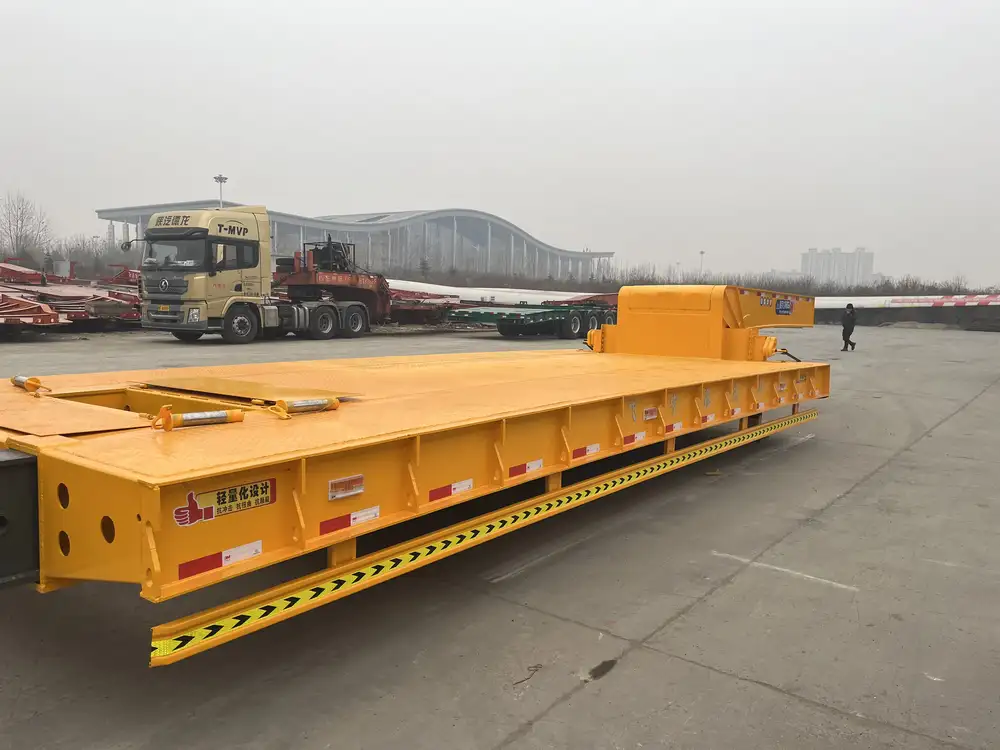In the realm of dump trailers, it’s crucial for operators and manufacturers alike to recognize the intricacies involving electrical systems, especially when it comes to battery connections. Among various concerns, one particularly pertinent inquiry arises: how fast does a loose battery connection discharge a dump trailer? This article delves deeply into the factors influencing battery discharge rates specifically in the context of dump trailers. By understanding these factors, operators can mitigate risks and enhance operational efficiency.
The Mechanics of Battery Connections
The Role of a Battery in Dump Trailers
In dump trailers, the battery serves as the lifeline for various electrical components, including hydraulic lifts, lights, and other auxiliary systems. A reliable battery connection is essential for optimal performance, as even minor faults can significantly impact overall functionality.

Defining a Loose Battery Connection
A loose battery connection occurs when the cable terminal isn’t tightly secured to the battery post. This condition can lead to intermittent power delivery, causing numerous issues affecting performance and safety.
Factors Affecting Discharge Rates
Electrical Resistance
Resistance in a loose connection is a crucial factor that influences the speed of discharge. As electrical current passes through a connection that isn’t properly secured, resistance increases, leading to energy loss in the form of heat. This loss not only furthers battery depletion but can also cause overheating, posing severe risks.

Battery Condition and Type
State of Charge (SoC):
- The current charge level of the battery directly influences how quickly it will discharge when there’s a bad connection. A fully charged battery may withstand the inefficiencies longer than a partially charged one.
Battery Type:
- Different batteries (lead-acid, lithium-ion, etc.) have distinct discharge characteristics. For instance, lead-acid batteries typically discharge more quickly under adverse conditions compared to lithium-ion counterparts which retain charge better despite resistance.
Variations in Load
The electrical load placed on the battery also dictates discharge rates. In dump trailers, operations such as raising the bed or activating hydraulic systems require significant power. If a loose connection is present during high-load conditions, the battery may discharge at a significantly accelerated rate.
Environmental Factors
External conditions often exacerbate issues related to loose battery connections. For instance:
- Temperature Extremes: High or low temperatures can affect battery chemistry, enhancing the discharge rate under poor connection circumstances.
- Moisture: Humidity may lead to corrosion on battery terminals, which can further elevate resistance and thereby increase discharge speed.

Discharge Duration: A Closer Look
General Estimates
While it’s challenging to provide an exact timeframe for discharge with a loose connection, several aspects can help create a general idea:
- Mild Loose Connection: In cases of slight looseness, a battery might lose approximately 10-15% charge per hour under typical conditions, leading to substantial energy loss over time.
- Severe Loose Connection: With a significantly loosened connection, discharge rates can exceed 30-50% per hour, especially if coupled with heavy loads or adverse environmental conditions.
Comparative Analysis of Discharge Rates
| Connection Condition | Estimated Discharge Rate | Comments |
|---|---|---|
| Tight & Secure | Optimal performance, minimal energy loss. | |
| Mildly Loose | 10-15% per hour | Noticeable energy depletion; potential inefficiencies. |
| Severely Loose | 30-50% per hour | Rapid discharge leading to operational failures. |
| Faulty Battery | Varies widely | Depends on battery state, could be critical. |

Implications of Rapid Discharge
Rapid discharge due to a loose battery connection can result in a host of operational dilemmas, including:
- System Failures: Sudden loss of power when raising or lowering the trailer can lead to accidents.
- Increased Wear and Tear: Components may suffer due to inconsistent power supply, ultimately leading to higher maintenance costs.
- Battery Damage: Overheating and excessive cycling can drastically reduce the lifespan of the battery.
Identifying and Mitigating Loose Connections
Signs of a Loose Battery Connection
Recognizing the signals of a loose battery connection is imperative for preventing premature discharge:
- Intermittent Power Supply: If components turn on and off unexpectedly, revisit the battery connections.
- Corrosion: Visual signs of oxidation on terminals can indicate a questionable connection.
- Physical Movement: Test the terminals; if they wiggle easily, tightening is essential.

Best Practices for Maintenance
- Routine Inspections: Regularly check and clean battery terminals, ensuring they are free from corrosion and securely fastened.
- Torque Specifications: Follow manufacturer guidelines for torque settings when securing battery connections to guarantee tightness.
- Use of Anti-Corrosive Grease: Applying a thin coat of anti-corrosive grease can help prevent oxidation and secure connections.
Upgrading Battery Technology
Contemplating a shift towards advanced battery technology could also yield benefits. Modern batteries with built-in management systems can help reduce the risk of loose connections and automatically adjust power supply according to demand.
The Long-Term Impact of Loose Connections

Economic Consequences
The financial ramifications of neglecting loose battery connections cannot be ignored. Frequent downtime for maintenance and repair due to battery-related issues can result in significant costs. Additionally, a poorly maintained trailer can lead to decreased resale value.
Safety Risks
Most importantly, the safety angle can’t be overlooked. Loose connections result in unpredictable power supply, which can pose serious risks not just to equipment but also to operators and pedestrians nearby.
Conclusion
In summary, the integrity of battery connections in dump trailers serves as a cornerstone of operational efficiency. Understanding how fast a loose battery connection can discharge your dump trailer and taking proactive steps for maintenance can save time, resources, and ensure safety.
Through robust practices such as regular inspections, employing modern battery technology, and recognizing the signs of loose connections, dump trailer operators can amplify performance and maintain a reliable operational environment. By prioritizing these facets, stakeholders can navigate the complexities surrounding battery management, ultimately enhancing productivity and reducing unnecessary expenditure.



